Agrimonia gryposepala
Agrimonia gryposepala tall hairy agrimony
Tall hairy agrimony is a native perennial wildflower found across much of eastern and central North America. It prefers partial shade and grows in a wide range of soils, from medium-dry to moist. Typical habitats include woodland edges, meadows, swamps, and open woodlands. The plant spreads slowly by rhizomes, often forming small, loosely connected colonies.
Its erect, sturdy stems are light green and often branched. They are covered in short sticky (glandular) hairs mixed with longer spreading hairs, especially noticeable lower on the plant. Note: Even though the plant is often described as upright, in shaded or saturated habitats, its lower branches often sprawl or arch outward, giving the plant a quietly horizontal presence beneath taller vegetation.
Leaves are compound, with 3 to 9 main leaflets (most often 5 to 7 on the middle of the stem) and 1 to 4 pairs of smaller leaflets in between. The end leaflet is the largest, measuring 1–4 inches long and 1⁄2–2 inches wide, with coarse, blunt teeth along the edges. Leaflets are widest near or above the middle, and they become smaller toward the base of the leaf. Upper surfaces are mostly smooth; the undersides are lighter green and can be hairy, especially along the veins and edges. At the base of each leaf stalk are large, broad stipules with toothed edges, 1⁄2 heart-shaped to egg-shaped.
Flowers are small (1⁄4–1⁄3 inch across) but numerous, arranged in tall, spike-like clusters that can extend several inches. Each flower has five yellow petals, five green pointed sepals, and 5–10 stamens tipped yellow to rust orange. At the base of the flower is a small cup-like structure (hypanthium) covered in bristly hairs. Flowers open from the bottom upward over several weeks, giving the plant a long blooming season.
The hypanthium matures into a bur-like fruit about 1⁄4 inch long, with rows of hooked bristles that easily cling to clothing, fur, or feathers. Inside are 1–2 small seeds.
Habitat & Range
Common in woodlands, edges of woodlands, fields, disturbed habitats. Prefers part shade to full sun and well-drained, fertile soils with moderate moisture.
Present throughout the state.
Range: Native to much of North America, from southern Canada through the eastern and central United States, extending south to Chiapas, Mexico; absent from the Rocky Mountains.
| EMP: | FACU |
|---|---|
| NCNE: | FACU |
Phenology
Flowers July through September.
Characteristics
Inflorescence tall, spike-like clusters several inches long; flowers open bottom to top
Flowers small (¼–⅓ in.), yellow, with 5 petals, 5 sepals, 5–10 stamens; base with bristly cup-like hypanthium
Leaves compound, 5–9 main leaflets with smaller ones in between; toothed edges; broad stipules at base; upper surface smooth, undersides nearly glabrous or sparsely hairy with resin droplets
Stems erect, moderately stout, light green, often branched; covered with short sticky hairs and longer spreading hairs
Fruit bur-like, about ¼ in., outer bristles hooked and reflext; contains 1–2 seed
Height 2-5 feet
Identification Tips
Look for tall, bristly stems; compound leaves with 3–9 toothed leaflets and smaller ones nestled between; broad, toothed stipules at the base of each leaf; and long, slender spikes of tiny yellow flowers. By late summer, the hooked burs make this species especially easy to spot, clinging readily to fur, feathers, or clothing.
Plant Codes
S-rank: S5 (Secure)
G-rank: G5 (Secure)
Ecology
The flowers attract small bees, especially sweat bees, as well as flies. A variety of insects also feed on the leaves and stems, and the bristly fruits are carried to new locations by animals and humans.
Often cohabits with goldenrods, asters, and woodland grasses.
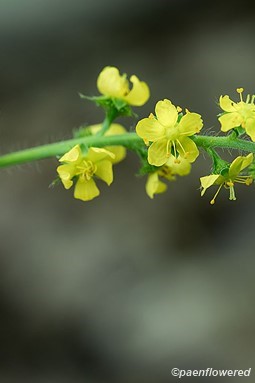
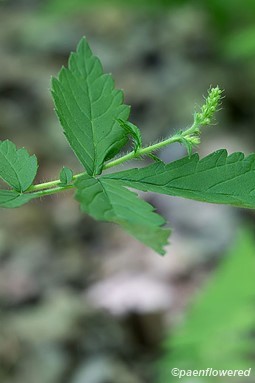
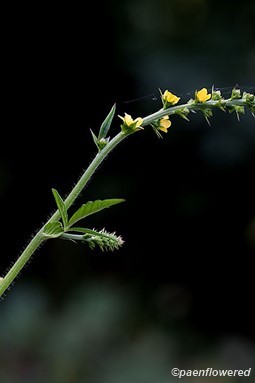
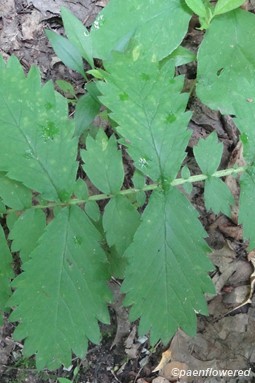
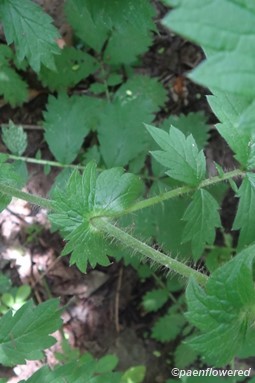
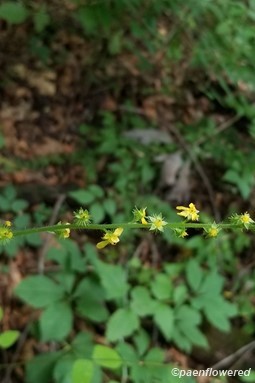
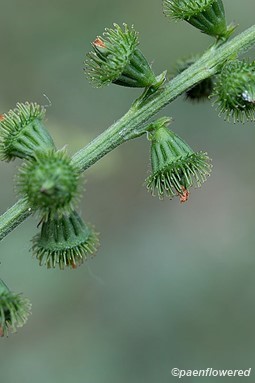
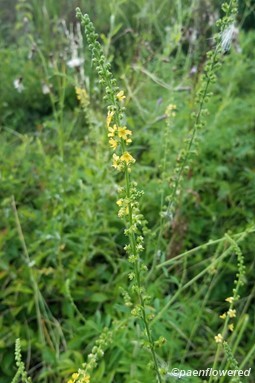
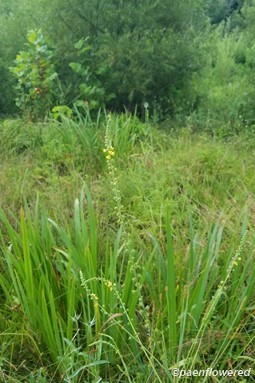
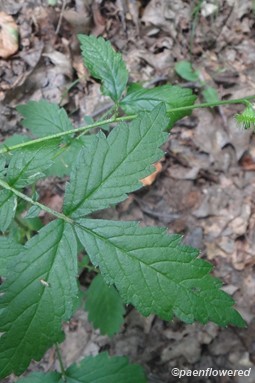
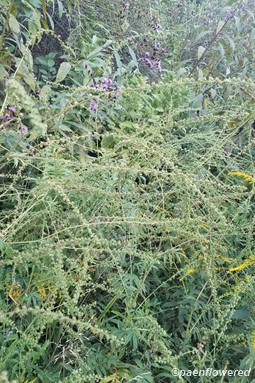


Comments
Have you spotted this plant in your area? We'd love to hear about your experience! Share your comments or questions about the plant below. Comments are moderated before posting.